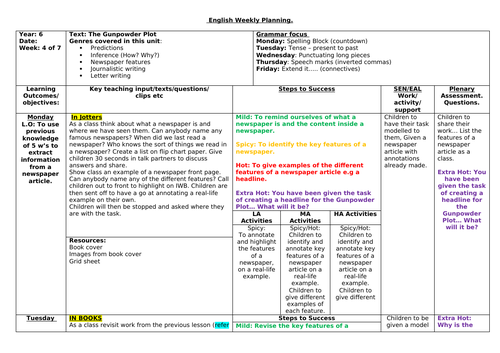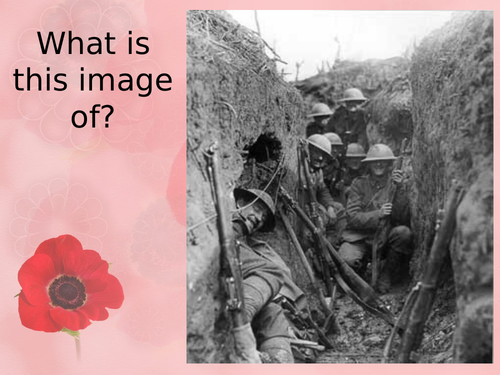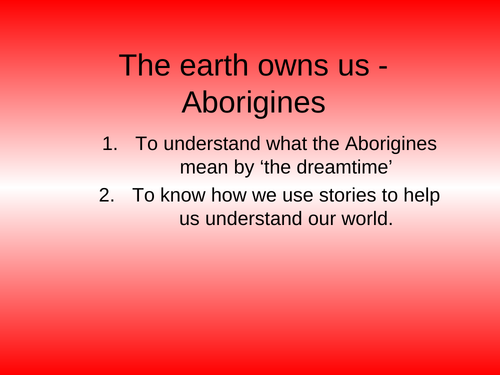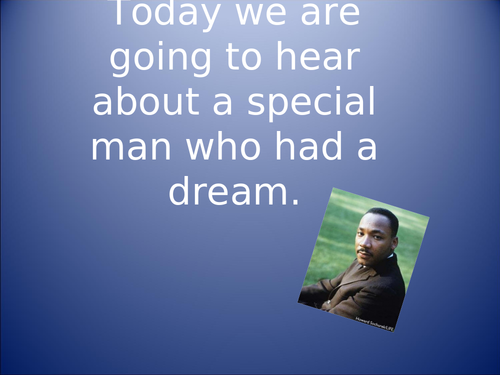351Uploads
96k+Views
27k+Downloads
History
Sale

Multi Faith week Islam Planning Powerpoints Worksheets Documents Ramadan
A great unit on Islam for primary school kids.
You get
14 pdf files
11 powerpoints
11 microsoft word documents
The planning is all there. The subjects include introduction to Islam, Mosques, Ramadan, pilgrims, the 5 pillars of Islam
example of text from worksheet :
Islamic Place of Worship
The ____________ is the place of worship for Muslim people. Most of these have a large dome above the main prayer hall. This is because the dome helps to
_________________________________________________________________________.
Outside the mosque, there is a _______________. This is a tower where the muezzin calls Muslims to prayer.
Inside the mosque there is a space to store shoes. This is because
__________________________________________________________________________.
There is also a place where the Muslims can wash. This is because
__________________________________________________________________________.
There are no seats in the main prayer hall because
_________________________________________________________________________ .
The ____________ on the wall show the times that Muslims must pray.
The ____________ wall is a wall which faces Mecca. In this wall, there is a _____________, which is a small cove pointing towards Mecca.
The minbar is a platform where the leader of the service (called the __________) gives his sermon.
This section may be blocked by a ________________. The mosque is also used as a place for
_______________________________________________________________________.
Islamic Place of Worship
The MOSQUE is the place of worship for Muslim people. Most of these have a large dome above the main prayer hall. This is because the dome helps to
ECHO THE PRAYERS AROUND THE MOSQUE.
Outside the mosque, there is a MINARET. This is a tower where the muezzin calls Muslims to prayer.
Inside the mosque there is a space to store shoes. This is because
MUSLIMS ARE NOT ALLOWED TO WEAR SHOES INSIDE THE MOSQUE.
There is also a place where the Muslims can wash. This is because
MUSLIMS ALWAYS WASH BEFORE PRAYING.
There are no seats in the main prayer hall because
MUSLIMS KNEEL ON MATS ON THE FLOOR DURING PRAYER.
The CLOCKS on the wall show the times that Muslims must pray.
The QIBLA wall is a wall which faces Mecca. In this wall, there is a MIHRAB, which is a small cove pointing towards Mecca.
The minbar is a platform where the leader of the service (called the IMAM) gives his sermon.
This section may be blocked by a SCREEN. The mosque is also used as a place for
TEACHING, MEETINGS AND QUIET MEDITATION.
Sale

Year 6 Cross Curricular Literacy History World War 2 English
To plan and write a recount text, using appropriate form, features and language.
To understand the value of the ‘home front’ during WWII.
To discuss and write about the life of children during WWII.
Understand the role of the ‘home front’ and the impact of rationing. Explain that this week’s literacy lessons are linked closely to our current history topic. We are moving on to a geography topic after half term.
Recap what we have learned recently in history lessons.
What were the main causes for WWII? Dates? Political leaders? Axis? Allies? How was the war fought? What was the Blitz? What sort of places did the Germans target? Why?
Last lesson I asked you to discuss the posters issued by the British Government. What did you find out?
Show the quote: “I have nothing to offer but blood, toil, tears and sweat. You ask, What is our aim? I can answer in one word: Victory.” TTYP – who do you think said this?
Come back together and establish that it was part of a speech by Winston Churchill when he became PM in May 1940. At this time, victory seemed a long way off.
Show map of the world. Explain that, at the time of this speech, the German forces had already conquered Norway and Denmark. Now, they were sweeping through Belgium and the Netherlands. By 20 May, they reached the English Channel. More than 500 000 British and French troops were trapped on the French coast at Dunkirk. Hundreds of boats, big and small, repeatedly sailed from Britain and brought nearly 340 000 safely back to England. The German advance went on. On 17th June France surrendered. Most of North-West Europe was now in Hitler’s hands. The German leader began to plan the invasion of Britain, only 34 KM away.
Britain now stood alone with scarcely anyone to help. The USA had not yet entered the war. The countries of the British Empire such as Australia and Canada were too far away. Churchill encouraged the people of Britain with defiant speeches. “We shall go on to the end,” he said, “we shall never surrender.”
What was providing a natural barrier for the British against the Germans? The sea. However, it also caused problems. Britain’s farmers could not grow enough food to feed the population. Large amounts had to be brought in from home by ships. Merchant or goods ships were slow and lightly armed and so were easy targets for German U-boats and bomber aircraft. Between March and May 1941 over 320 merchant ships bound for Britain were sunk. Food such as flour, meat and sugar were in short supply.
Sale

Roman Assembly Short Play History Key Stage 2
A short play on the Romans.
Great for a quick ten minute assembly or a part of a fun lesson.
Sale

Year 6 Autumn Planning Gunpowder Plot Newspaper Reports
Some great year 6 short term Literacy planning.
Covers the Gunpowder Plot.
Brucie Bonus: some free Maths planning
Sale

Year 5 Back to School Autumn Planning Fables Literacy Lots of Planning
Lots of planning for the Autumn term.
Literacy.
Powerpoints, planning and handouts included. Plenty of a month’s work.
Sample planning:
Genre: Traditional stories, fables, myths, legends.
Focus Texts: Robin Hood (Legend), Hercules (Myth) and Pandora’s Box (Myth).
Objectives
Primary Framework 7. Understanding and interpreting texts
Compare different types of narrative and information texts and identify how they are structured
Explore how writers use language for comic & dramatic effects
8. Engaging with and responding to texts
Compare the usefulness of techniques such as visualisation, prediction and empathy in exploring the meaning of texts
11. Sentence structure and punctuation
Punctuate sentences accurately, including using speech marks and apostrophe
Learning/Writing outcome for unit: Children can write a new version of a legend, identifying their audience and adapting their writing to suit this audience.
Children can reflect on their own performances.
Children can reflect critically on their own writing and edit and improve it.
NB Teacher Day on Monday, Mass on Thursday
LO: Whole Class Shared Learning
Guided and Independent Activities: Plenary:
Tu Identify features of a myth.
Introduce the new unit and look at the writing outcome displayed on the working wall – explain that we have three weeks to achieve this.
Allow children two minutes to TTYP and talk about the new unit – do they have any ideas about myth, legends or fables?
Introduce the LO for today.
Work through the PowerPoint on the features of a myth.
Activity One
Come back together and create a ‘post it’ note checklist for the working wall, to include:
A myth is about gods and goddesses
It is set in ancient times
It features danger/revenge
It includes use of magical powers
It uses powerful imagery
Characters are heroes
Explains a strange/important happening
It features strange, frightening creatures
Read the following version of ‘Pandora’s Box’ and compare & contrast:
http://myths.e2bn.org/mythsandlegends/story562-pandoras-box.html
Activity Two Activity One
Read through the myth of ‘Pandora’s Box’ Discuss the features – give children 10 minutes to highlight the features in pairs.
LA: Supported by IR
Activity Two
Provide several examples of myths for pairs. Children to highlight and annotate the features. Differentiate questioning after activity.
Discuss the task – were all the features present?
Push HA to say that Myths pass on cultural, religious or spiritual beliefs and traditions.
Look at the ten rainbow steps to writing a myth on PPT – discuss how this links to the story mountain.
Homework and spellings.
Sale

John Lennon The Beatles Vietnam War Modern History Planning US UK History
Nice little unit on modern history.
Some nice powerpoints.
Sample:
Using Notebooks – answer questions.
Who was John Lennon?
What can you find out about him?
Birthday Family Friends Community Music
Is he still alive? If not, when, where and how did he die?
Why is he famous? Rdg AF 2
WALT investigate the life of John Lennon
WILF you can record information carefully about J L.
Using questions, investigate life of J L
What kind of childhood did John Lennon have?
Recall information we know about Lennon so far. Establish that when Lennon was the children’s age it was around 1948/9. He was a teenager in the Mid 1950’s and grew into adulthood in the 1960’s. So his ‘era’ was the 1950’s and beyond.
What do you think life was like for a child growing up in the 1950’s?
How can we find out what it was like for children of your age at that time?
Rdg AF 2 AF 3
WALT select information from books and the internet
WILFcompare and contrast life in the 1950’s to life today.
Give each group their focus area to research:- School in the 1950’s; Home Life in the 1950’s; Food in the 1950’s; Leisure Activities in the 1950’s; Fashion in the 1950’s Technology in the 1950’s and key questions you want them to find answers to.
Children will record their findings on a Compare and Contrast Table the 1950’s v. 2010
Sale

Year 2 English Maths Planning Plus History World war 2
Lots of English and Maths. Tremendous amount of stuff on World War 2.
Text: Room on the Broom. We will also share a variety of Julia Donaldson texts with the children at the end of each day to support and promote new learning and understanding.
Genres covered in this unit: Non-Narrative. Grammar focus:
Monday: Using a capital letter to start a name: Julia Donaldson.
Tuesday: Using a question mark at the end of a question.
“How many books have you written?”
Wednesday: Writing a clear sentence using a capital letter and a full stop.
Thursday: Writing a clear sentence using a capital letter and a full stop.
Friday: Writing a clear sentence using a capital letter and a full stop.
Key teaching input/texts/questions/
clips etc Steps to Success
Teacher to display a picture of Julia Donaldson on IWB.
Q: Who do you think this is? What do you think she does for a living? Why? - Teacher to encourage pupils to expand on their answers/thinking. Teacher to explain that this woman is called Julia Donaldson and she is a children’s author. Class to work together to list stories from this author using reading area to support. E.g. The Gruffalo, The stick man, Room on the Broom…
TTYP: Can you think of 3 questions that you would like to find out about this author? – Class to share ideas and Teacher/TA to scribe to support future learning.
Using the following website, Teacher to carry out shared reading with the class to discover new information/answer any questions e.g. “How many books have you written” : http://www.juliadonaldson.co.uk/index.php
Mild: state something you would like to find out about Julia Donaldson.
Spicy: use phonetic knowledge to segment and blend CVC/ CVCC words
Hot: share an interesting fact you have found out about Julia Donaldson.
Extra Hot: Would you like to be an Author? Why?
Sale

Beowulf Teaching Materials Planning Powerpoints Anglo-Saxons Poetry Year 6 Literacy
You get 48 files. Include a dozen powerpoints. All in zip. Some in the genr=eral upload.
Some nice free bonus stuff on History, jewellery and ship making.
Sample
L.O. To use knowledge of quest myths and the Vikings to create a character profile for the main character and hero of our own Viking quest myth story.
I can use my knowledge of quest myths and the Vikings to create a character profile for the main character and hero for my own Viking quest myth story.
Beowulf Lesson 4
STARTER – adjectives
Look at text and highlight in pairs adjectives that describe Beowulf, then using post –it notes in pairs, begin to generate more words form pictures displayed on the IWB of Beowulf in various positions/battles and write some of their own powerful adjectives. These can then be ‘magpied’ by the children during the independent work.
Main activity
Hot seating – Beowulf and the King
Use the questions generated on Wednesday as interview questions. Choose children that would like to play those parts – use a sword and shield if we have one
This will hopefully give the children an idea as to what these main characters are like, their personality and how they think and react to different situations that happen in the story.
Teacher to explain/demonstrate how the profile needs to be complete. Discuss what the words – appearance and personality mean and how they are different.
Independent work
Character profile – Beowulf the hero of their quest myths
Using ‘My Viking Quest Myth Ideas Planning Booklet’ create a character profile for their Beowulf hero by labeling the picture, answering the questions in detail and adding descriptive words and phrases to describe his personality and appearance.
Plenary
Discuss the difference between appearance and personality of a character and what does it mean by special qualities? Because he isn’t a super hero!
Sale

Remembrance Day World war 1 History Teaching Materials Plans Resources KS2 History
I’m now retired from teaching after decades in the classroom.
I’d like to help the younger generation.
One aspect I don’t miss is Sundays. Trying to fill in planning grids that were rarely used or looked at. What a nightmare!
So I’ve put together my teaching plans, powerpoints, adobe pdf files etc from the various schools I was in.
Feel free to adapt for your planning grid.
In it are lesson plans, powerpoints, questions etc.
You get:
9 pdf files
19 powerpoints
16 word files
Sale

Remembrance Day Powerpoints with PDFs Worksheets info etc.
10 powerpoints on Remembrance day that you can adapt to suit your class.
Plus a dozen or so short pdfs and worksheets to do with Remembrance.
Plus an assembly. Adapt by putting in your kids names in the class.
There’s something for ks1 and ks2 kids here. I have adapted the powerpoint so you can choose ks1 or ks2.
Sale

Black History Month Aborigines Two powerpoints Aboriginal Art Worksheets
Celebrate Black History Month with two excellent powerpoints and some great worksheets.
Lots of great info on Aboriginal art.
Kids of all abilities will love this.
Absorbing and great for afternoon art work.
Sale

Black History Month Martin Luther King Powerpoint
A powerpoint of the great MLK.
Excellent for Black History Month.












